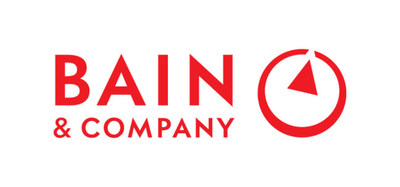Healthcare AI investment focusing on hard-dollar returns and clinical workflows amid shift from pilots to widespread production--Bain & Company and KLAS Research
- Providers remain capacity-constrained, prioritizing revenue cycle management and solutions with demonstrable returns on investment
- AI-powered tools gain traction among providers – ambient documentation adoption furthest along
- Payers face higher medical loss ratios, utilization rates, and risk-adjustment scrutiny while bracing for enrollment pressures.
- Payer IT dollars take aim at care coordination and utilization management, with increased spending in pockets of high-ROI value-based care.
The prioritization of technology solutions that deliver greatest impact to bottom lines comes as the healthcare sector's deployment of AI moves from a previous phase of broad exploration to focused execution to capture financial benefits, Bain and KLAS report in their 2025 Healthcare IT Spending study. 70% of providers and 80% of payers now have an AI strategy in place or in development – significantly up from 60% for both groups in last year's Bain/KLAS survey.
The 2025 Bain/KLAS survey of some 228 US healthcare provider and payer executives finds that revenue cycle management (RCM) and clinical workflow are providers' key priorities while payers emphasize utilization and network management. Providers remain capacity-constrained, prioritizing solutions with demonstrable return on investment (ROI). Payers face higher medical loss ratios, utilization rates, and risk-adjustment scrutiny while they brace for enrollment pressures.
"Healthcare AI is moving out of the pilot stage and being leveraged to meet profitability needs of both providers and payers," said
"AI in healthcare is here to stay, and providers and payers are wisely moving from exploration to execution," said
Where providers are investing
In the latest Bain/KLAS survey findings this year, RCM returns to primacy among providers, having been supplanted last year by IT infrastructure and cybersecurity spending in the wake of the
The repetitive, rules-based nature of RCM makes this function a natural proving ground for automation and for generative AI, Bain and KLAS note. RCM represents the four most common AI use cases currently: ambient documentation, clinical documentation improvement, coding, and prior authorization. Ambient documentation is furthest along, with roughly one-in-five providers at full rollout and another two-in-five in pilot.
Providers are also continuing to invest in clinical workflow optimization tools that improve throughput, support care quality goals, and reduce clinician burnout. Because labor remains scarce, improvements in clinician experience and productivity are an urgent priority, the survey results indicate.
Where payers are investing
Care coordination and utilization management remain the top IT priorities for payers for the second straight year in the survey results, Bain and KLAS find. Plans seek to manage medical cost and close care gaps through prior authorization automation, improvements to care management workflows, and population-level data aggregation and analytics. Network optimization and plan design is the fastest-rising category. Payers have leaned into tools that help them assess provider performance and steer members toward high-quality care, which is critical to Medicare Advantage STAR performance.
Spending on value-based care enablement is accelerating, particularly around risk and quality applications. Roughly three-quarters of plan respondents expect spending in this category to grow faster than other IT priorities over the next three years. AI adoption in payer operations is concentrating first in contact centers, member engagement and follow up, and underwriting and pricing. These domains benefit from personalization at scale by doing so, create meaningful value in member experience, enable better outcomes, and reduce administrative expense.
The outlook for AI
Bain and KLAS report that provider results from AI deployments are encouraging. While many providers say that it is still early to quantify precise financial returns, the qualitative read from them on AI implementations is positive. Fewer than 5% of providers surveyed indicate that the technology was not meeting expectations for categories in which AI solutions have been introduced; most are excited or very excited to scale up AI in those areas.
AI's ROI outcomes have generally been positive on the payer side, too, although there are more instances of payers saying AI use cases have not met expectations, likely owing to the scale of internal IT and other operating resources available to assess the impact of AI. Still, payers appear excited to scale up generative AI use cases – notably for various forms of member/care navigation, in which they see an opportunity to engage members at a scale and level of operations previously unimaginable.
Media contacts:
For more information, questions, or to request an interview, please contact:
About
Across 65 cities in 40 countries, we work alongside our clients as one team with a shared ambition to achieve extraordinary results, outperform the competition, and redefine industries. We complement our tailored, integrated expertise with a vibrant ecosystem of digital innovators to deliver better, faster, and more enduring outcomes. Our 10-year commitment to invest more than
About KLAS
KLAS is a research and insights firm on a global mission to improve healthcare delivery by amplifying the provider's voice. Working with thousands of healthcare professionals and clinicians, KLAS gathers data and insights on software, services, and medical equipment to deliver timely reports, trends and statistical overviews. The research directly represents the provider voice and acts as a catalyst for improving vendor performance. Learn more at klasresearch.com.
![]() View original content to download multimedia:https://www.prnewswire.com/news-releases/healthcare-ai-investment-focusing-on-hard-dollar-returns-and-clinical-workflows-amid-shift-from-pilots-to-widespread-productionbain--company-and-klas-research-302579069.html
View original content to download multimedia:https://www.prnewswire.com/news-releases/healthcare-ai-investment-focusing-on-hard-dollar-returns-and-clinical-workflows-amid-shift-from-pilots-to-widespread-productionbain--company-and-klas-research-302579069.html
SOURCE

